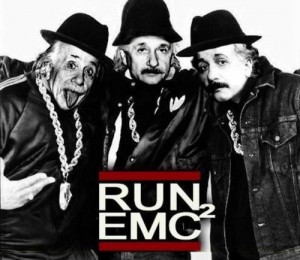May 28
ChRIS CLÉiRIGhmode and modalities
Thibault’s distinction of ‘body-as-actor’ vs ‘body-as-signifier’ is useful here.
The material order includes the body-as-actor.
The semiotic order includes the meanings realised by the body-as-signifier.
The body-as-signifier participates in the various types of body language.
These include
(1) the sociosemiotic types:
(a) protolinguistic: interactional, regulatory, personal, instrumental
(b) linguistic: redundant with the rhythm or intonation of speech
(c) epilinguistic: textual (eg reference), interpersonal (eg polarity), ideational (eg representation)
(2) manifestations of biosemiosis:
behavioural tokens of sensing: emotive, desiderative, cognitive, perceptive

May 24
ChRIS CLÉiRIGhgeneral observations, mode and modalities
E=mc²
Energy equals mass [multiplied by the speed [of light [squared]]].
This is an intensive identifying relational clause.
The Value is realised by a nominal group with a Qualifier involving three levels of embedding.
(i.e. yes)

May 22
ChRIS CLÉiRIGhgeneral observations, mode and modalities
CH4 + 2 O2  CO2 + 2 H2O
CO2 + 2 H2O
(one molecule of) methane and (two molecules of) oxygen yields (one molecule of) carbon dioxide and (two molecules of) water.
This is a causal circumstantial identifying relational clause.
The Token and Value are both realised by nominal group complexes in each of which the relation between the nominal groups is paratactic extension.
(i.e. yes)
May 22
ChRIS CLÉiRIGhgeneral observations, mode and modalities
Each mathematical equation is an intensive identifying clause.
The entire derivation is a clause complex of paratactic elaboration.
The solution of a derivation is a decoding identifying clause
in which the unknown (x) functions as a Token identified by a mathematical Value.
(i.e. yes)
Feb 28
eldonepistemology, materiality, mode and modalities, suitable quotations inter-modal tension, lemke
excerpt from: Lemke, Jay: Material sign processes and Emergent Ecosocial Organization: Downward causation and the levels paradigm
[accessed November 2000]
The reductionist trick was predicated on the assumption that the
different ‘pieces’ or views from different perspectives could always somehow
be neatly fit together. But we now know that material processes cannot be
comprehended, cannot be exhaustively described within any one single
self-consistent formal discourse. They always overflow the limited
possibilities of our semiotic models of them. It is only by building more
and more semiotic-discursive models, each internally self-consistent, but
not limited by requirements of mutual consistency with each other, that we
can, by adding together such ‘complementary’ views, attain to the most
complete possible account of material phenomena, including semiosis itself.
Thus we still come back to a version of ‘assemblage’ but hopefully a more
sophisticated one, one that takes into account our own role and perspective
as observers, as well as the material means by which we observe, compare,
and assemble — the material mediation of our semiotic practices.
…..
every process of semiosis is not just a social and
cultural practice, but also a material activity in which not just humans but
also non-human elements of the ecosytem participate.
Feb 26
eldoncontext, mode and modalities, suitable quotations hasan
Ruqaiya Hasan 1999: TEXT AND CONTEXT IN FUNCTIONAL LINGUISTICS
Edited by MOHSEN GHADESSY
So paraphrasing field as social activity does not recognise the verbal action aspect of social activity. Verbal actions such as those of explaining, defining, narrating, reporting, chronicling, lecturing and a myriad of others that I would describe as verbal actions are treated as a matter of mode in the current SFL models of context. From this perspective, the distinction between field and mode is suspiciously reminiscent of the distinction between the what and the how, the content and the style, which has always been popular in literary criticism.(270)
…the notion of social activity must be reconceptualised to cover both action and locution, both material and verbal action, and my recent exploration of the relations of context and text appears to support this position. (271)
Table 10 suggests that linguistic models of context which treat material action as a matter of field and verbal action as a matter of [ancillary] v. [constitutive] mode might have greater difficulty in identifying those environments where textual integration or co-location might be at risk (280-281)
3.4 Ancillary and constitutive verbal action: field or mode ?
… In agreement with other systemicists’ views, I too have typically treated the distinction between constitutive and ancillary as a matter of mode, even despite occasional misgivings (see Section 2.3 and footnote 58): I suggested, in fact, that the two terms refer to the two endpoints of a cline, viz., the role of language (see Hasan 1980, 1985b etc; for further discussion and development, see Cloran 1994). In SFL, persuasion, explanation, definition, etc, are described as categories of rhetorical mode.
…the role language is playing or what it is doing in the social situation (cf Halliday’s remarks in Ch1) are not aspects of mode, nor is rhetorical mode really a phenomenon that belongs in mode: rather, these various cases of speaking, viz., persuading, explaining, joking, narrating are cases of verbal action. There seems no reason for suggesting that instead of verbal action, they are just a modality or mode for bringing that action about, especially since the actions in question are un-doable any other way except verbally…
as the description of the field of discourse progresses in delicacy, it would become possible to identify the specific lexicogrammatical and semantic domains at risk in the realisation of specific choices from the systems of field: such work is in fact well under weigh (see Halliday & Martin 1993; also Matthiessen, in press). This claim takes us to a higher level concept, to what I have called genre specific semantic potential elsewhere (Hasan 1985b:98ff.) which consists of the meanings and wordings that are crucial to the identity of a register, which is naturally related to the notion of domain of signification. (287)
[my emphasis]
Jan 27
ChRIS CLÉiRIGhmode and modalities
We’ve added a new blog to both the blog roll and the SFL-related links on the sidebar.
We think you should check it out:
Spatial Semiotics: exploring the grammar of the built environment.
Jan 27
ChRIS CLÉiRIGhgeneral observations, language and culture, mode and modalities
SFL enables us to see a parallelism between pantheism and social semiotics.
By pantheism, I mean the practice of regarding natural phenomena as if persons: ie as if gods, spirits etc; by social semiotics, I mean the practice of regarding material phenomena, especially human artefacts, as if signs: ie as if metaphenomena.
In pantheism, natural material phenomena are treated as symbol sources. In personifying such phenomena, the type of symbol source is Senser: ie a conscious participant capable of projecting the content of consciousness.
In social semiotics, artefactual material phenomena are also treated as symbol sources. Here, though, the type of symbol source is Sayer: ie a participant, not necessarily conscious, capable of projecting the content of consciousness (the sign says x).
Sep 21
ChRIS CLÉiRIGhmode and modalities
1.
The path a person takes through an architectural space is not analogous to a text. It is analogous to a reading path through a text, such as a specific reading path through a dictionary, or a specific reading path through a website, eg via hyperlinks.
The text is the meaning of the architectural design as realised by the material configuration devised by the architect.
A reading path is ‘meta’ with regard to the text, in the sense that it is a pattern of a pattern: a pattern ‘written over’ the pattern that is the structure of the text.
2.
Semiotic systems other than language do not have a grammar in the SFL sense. See Halliday & Matthiessen (1999: 605-6).
Older Entries Newer Entries
 RSS
RSS

 CO2 + 2 H2O
CO2 + 2 H2O
Recent Comments